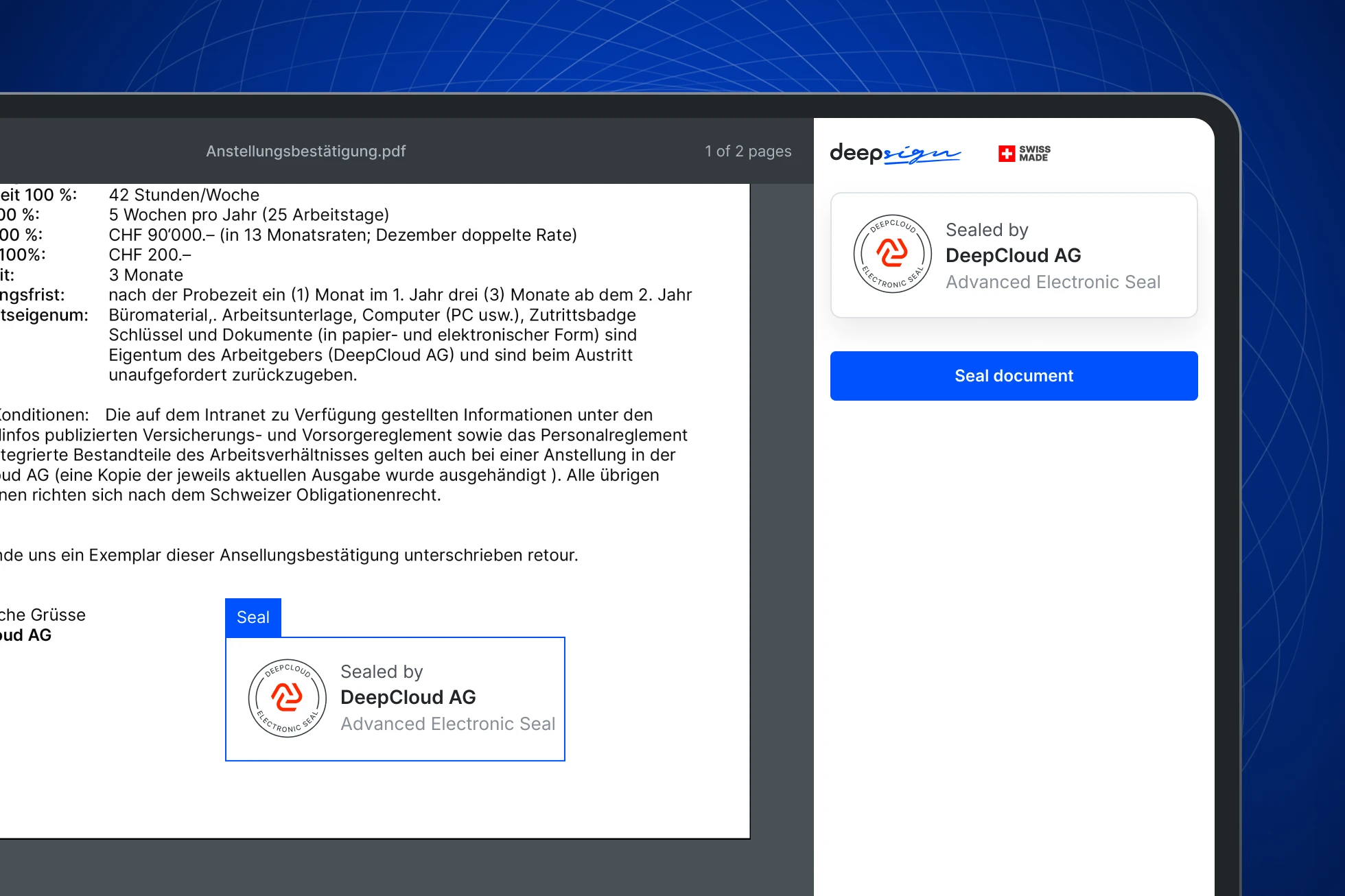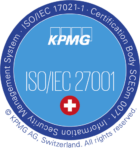
Digital signatures: benefits for Swiss cities and municipalities
13 August 2025
Learn about the different types of electronic seals in Switzerland, how they differ, and which one best suits your needs. Discover the benefits of regulated seals and how easily they can be integrated with DeepCloud

In today’s digital world, ensuring the authenticity and integrity of electronic documents is crucial. In Switzerland, businesses and organisations rely on electronic seals to verify the origin of documents. But what are the different types of electronic seals, and which one should you use? Let’s explore the key differences and benefits.
The three types of electronic seals in Switzerland
Switzerland recognises three distinct types of electronic seals:
Each seal serves a specific purpose and adheres to different levels of legal and technical requirements.
Advanced Electronic Seal
An Advanced Electronic Seal proves that a document was issued by a legal entity and ensures its authenticity and integrity. It functions similarly to an Advanced Electronic Signature, which is used by individuals. However, under the Swiss Signature Law (ZertES), advanced electronic seals are not explicitly defined. This lack of regulation means there are no official validators available to verify them, making their legal value lower compared to regulated seals.
Regulated Electronic Seal
A Regulated Electronic Seal is legally defined under Swiss law (ZertES) and must meet strict standards. Regulated seals can be verified using official validation tools, ensuring their correctness. Due to this higher level of trust and security, regulated seals are recommended over advanced seals for official use.
Regulated Electronic Seal with Government Certificate
A Regulated Electronic Seal with Government Certificate is used by government authorities. These seals are issued based on a regulated seal and are tied to a UID unit (Unique Business Identification Number).
How to order an electronic seal?
Ordering an electronic seal is a quick and easy process with DeepCloud. Here’s how you can get started:
This streamlined process allows businesses and organisations to start using electronic seals quickly and efficiently.
What is an electronic seal certificate and what information is contained in it?
Companies and authorities use seal certificates to electronically seal official documents (e.g., invoices, certificates, tax documents). It provides proof of authenticity and document integrity. A regulated seal certificate includes:
Verification of electronic seals
Regulated electronic seals can be verified using the official Swiss Federal Validator or DeepCloud’s soon-to-be-launched DeepValidator tool. This verification process ensures compliance and strengthens trust in digitally signed documents.
In brief
Choosing the right type of electronic seal is essential for maintaining document integrity and legal compliance. While advanced electronic seals offer basic security, regulated seals provide official validation and stronger trust. For government-related use, a regulated seal with a government certificate ensures the highest level of authentication.
For a hassle-free electronic seal integration, DeepCloud provides a simple and efficient ordering process, ensuring your organisation can quickly implement the electronic seal.
For more information, contact support@deepcloud.swiss or visit our website.
Contact
DeepCloud certificates

Information security management for hosting services, in accordance with the Statement of Applicability.

Unattended remote identity proofing with hybrid manual and automated operation according to the international standard ETSI.